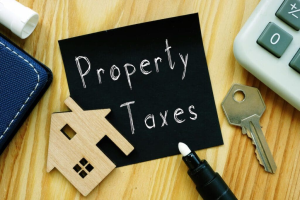The UK’s £10 Trillion Housing Dilemma
With UK housing valued at over £10 trillion, and most of that being pure equity (unmortgaged), the conversation around property tax hikes is heating up. As the government hunts for new revenue sources, property wealth stands out as low-hanging fruit. But would increasing property tax actually work? And how might it affect property investors, landlords, and homeowners?
How Property Taxes Work in the UK
What is Property Tax in the UK?
In the UK, property tax comes in several forms:
- Stamp Duty Land Tax (SDLT): Paid when buying property
- Council Tax: Annual tax paid by occupants
- Capital Gains Tax (CGT): Paid on profit from property sales (not main residences)
- Rental Income Tax: Income tax on profits from letting property
Together, these taxes raised over £10 billion in 2023/24 alone. SDLT especially targets higher-value and second-home purchases, making it feel more like a wealth tax than a transactional levy.
Why Are Property Taxes Rising?
Why Did Property Tax Rise So Much?
The jump is due to:
- The expiration of pandemic-related SDLT reliefs
- Inflation pushing up property values and taxable thresholds
- Increased reliance on wealth-based taxation to fund public services
How Much Do Property Owners Pay?
How Much Tax Do You Pay for Owning a House in the UK?
There is no annual tax for owning a property in England, but you’ll pay:
- Council Tax: £1,200–£3,000+ depending on location
- Stamp Duty when purchasing
- CGT if selling an investment property
How Much Property Income is Tax-Free in the UK?
You can earn up to £1,000 tax-free per year through the property income allowance, or claim allowable expenses. Higher earners pay up to 45% tax on net rental profits.
Rules You Need to Know
What is the 36-Month Rule?
If you’ve moved out of your main residence, the last 36 months of ownership still qualify for CGT relief. This protects sellers during transitions.
What is the 2-Out-of-5 Rule?
You must have lived in a property for 2 out of the last 5 years to qualify for private residence relief when selling, protecting you from most CGT charges.
What is the August Rule?
Though not a formal tax term, “August Rule” often refers to CGT timing strategies—like selling just before a new tax year. It’s commonly used in tax planning to manage thresholds or changes.
Selling, Moving & Overseas Property
Do You Pay Tax When You Sell Your House in the UK?
Not if it’s your main residence. The main residence relief makes owner-occupier home sales exempt from CGT. But investment properties and second homes do incur CGT.
Can I Sell My House and Still Live in It in the UK?
Only under sale-and-leaseback arrangements or if you transfer ownership (e.g., to family). Be aware this can affect tax liability and eligibility for CGT relief.
Do I Have to Pay Tax in the UK if I Sell My House Abroad?
Yes — UK residents must declare overseas property sales. You may owe UK CGT, but can often claim foreign tax credits to avoid double taxation.
Global Context: Property Tax Abroad
What Countries Have No Property Tax?
Countries with no annual property tax include:
- Monaco
- UAE
- Malta
But many still charge high acquisition fees or stamp duty.
What States Have No Property Tax or Income Tax?
In the U.S.:
- States with no income tax: Florida, Texas, Nevada
- No state has zero property tax, but rates vary—Hawaii and Alabama have some of the lowest.
Investor FAQs & Wealth Management
What is the Most Tax Efficient Way to Buy Property in the UK?
- Using a limited company structure (for buy-to-let)
- Maximizing spouse exemptions and CGT allowances
- Investing in areas with lower SDLT bands
- Using pension funds (SIPP/SSAS) for commercial property
Is Buying Property in the UK a Good Investment?
Despite tax changes, UK property remains strong due to:
- Long-term capital growth
- High rental demand
- Stable legal framework
But the net yield is narrowing, especially in areas hit hardest by stamp duty and reduced mortgage relief.
System Criticism & Proposed Reforms
Why Are My Property Taxes So High Compared to My Neighbors?
Possible reasons include:
- Different council tax bands
- Area-specific levies
- Property size and valuation discrepancies
Who Raises Property Taxes?
- National government: Stamp Duty, CGT
- Local councils: Council Tax and specific regional levies
Does Inflation Cause Property Taxes to Go Up?
Yes. Inflation increases property valuations, leading to:
- Higher SDLT upon purchase
- Increased council tax banding
- Greater capital gains upon sale
Future Tax Changes: What Could Happen?
Will Reliefs Be Scrapped?
The most at-risk relief is CGT allowance, which has already dropped from £12,000 to £3,000. A lifetime CGT cap on the main residence is also being discussed—though politically risky.
Is a Wealth Tax on Homes Coming?
Not officially. But stamp duty and CGT are already functioning as de facto wealth taxes, especially for:
- Second homes
- Foreign buyers
- Properties over £1M
What Should Investors Do Now?
- Model your CGT exposure across multiple properties
- Consider corporate ownership for high-yield portfolios
- Watch for any Autumn Budget updates on SDLT or CGT
- Plan sales to maximize existing reliefs while they last









































